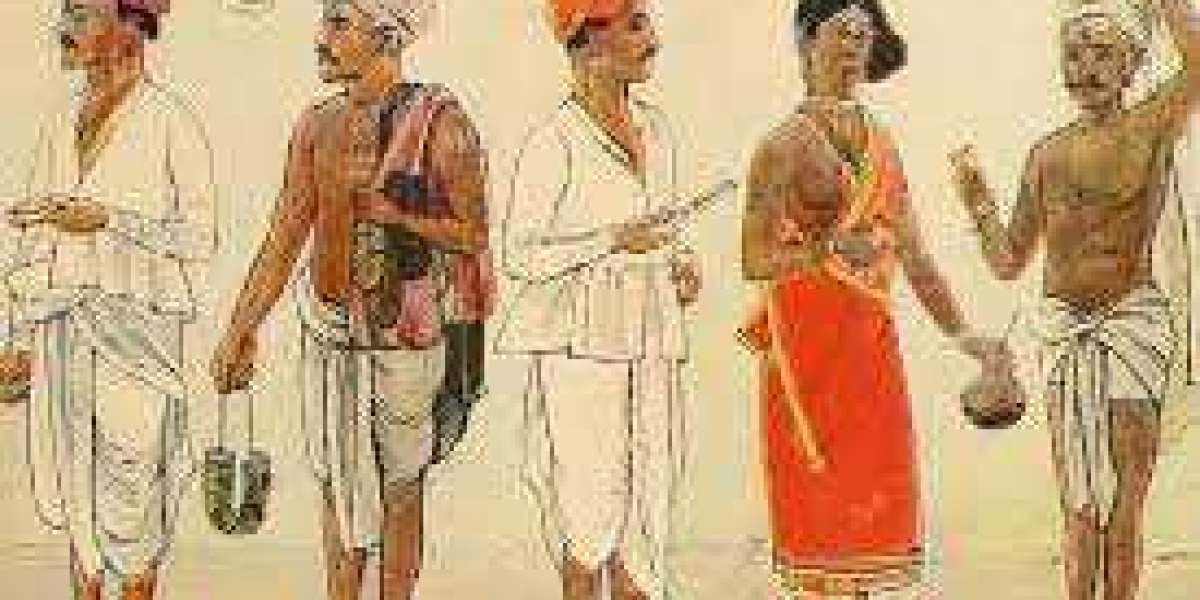The story of Indus Valley clothing is one of evolution and adaptation, spanning millennia and continents. From its humble beginnings in the ancient cities of Mohenjo-Daro and Harappa to its modern interpretations on global runways, Indus Valley attire has undergone a remarkable journey of transformation. Exploring this evolution offers not only a glimpse into the fashion trends of ancient civilizations but also a deeper understanding of the cultural exchange that continues to shape contemporary fashion.
The Origins of Indus Valley Clothing:
A Glimpse into Ancient Wardrobes
The Indus Valley Civilization, flourishing from around 3300–1300 BCE, left behind a wealth of artifacts that provide insights into its clothing traditions. Excavations at sites such as Mohenjo-Daro and Harappa have uncovered pottery, seals, and figurines depicting figures adorned in draped garments made of cotton and wool. These artifacts offer a glimpse into the clothing choices of the ancient Indus Valley people, showcasing their preference for simplicity and elegance in attire.
Functional Fashion: The Practicality of Indus Valley Attire
Indus Valley clothing was not only stylish but also highly functional, tailored to suit the climate and lifestyle of its wearers. Draped garments such as dhotis for men and saree-like attire for women allowed for ease of movement in the bustling urban centers of the ancient civilization. Moreover, the use of locally sourced materials like cotton and wool reflected the resourcefulness and ingenuity of the Indus Valley people.
The Evolution of Indus Valley Fashion:
Cultural Exchange: Influences from Near and Far
As trade routes expanded and cultural exchange flourished, Indus Valley clothing traditions began to assimilate influences from neighboring regions. The rich tapestry of cultural diversity in ancient South Asia led to the incorporation of new styles, fabrics, and embellishments into Indus Valley attire. From the intricate embroidery of Central Asia to the vibrant textiles of Mesopotamia, these influences enriched the fashion landscape of the region.
Adaptation and Innovation: The Changing Face of Indus Valley Fashion
Over time, Indus Valley clothing continued to evolve, adapting to shifting social, political, and economic landscapes. The rise and fall of empires, the spread of religious beliefs, and the emergence of new technologies all left their mark on fashion trends in the region. From the draped elegance of the Mauryan period to the opulent textiles of the Mughal era, Indus Valley attire underwent a series of transformations, each reflecting the cultural zeitgeist of its time.
The Influence of Indus Valley Clothing on Modern Fashion:
Revival of Ancient Elegance: Contemporary Interpretations
In recent years, the allure of Indus Valley fashion has experienced a resurgence, inspiring contemporary designers to reinterpret ancient styles for modern audiences. Elements such as draped silhouettes, intricate embroidery, and symbolic motifs reminiscent of the Indus Valley have found their way onto fashion runways worldwide. By infusing their designs with echoes of the past, designers pay homage to the timeless elegance of Indus Valley attire while adding a fresh, contemporary twist.
Sustainability and Ethical Fashion: Lessons from the Past
In addition to its aesthetic appeal, the Indus Valley's influence on modern fashion extends to sustainability practices. The ancient civilization was known for its efficient use of resources and environmentally friendly production methods. Today, designers are increasingly turning to eco-friendly materials and ethical production processes, echoing the sustainability ethos of the ancient Indus Valley people. From organic cotton to natural dyes, fashion brands are embracing practices that prioritize environmental conservation and social responsibility.
Conclusion:
The evolution of Indus Valley Clothing from ancient artifacts to modern runways is a testament to the enduring legacy of this ancient civilization. Through centuries of cultural exchange and innovation, Indus Valley attire has adapted to changing times while retaining its intrinsic elegance and sophistication. Today, as contemporary fashion embraces the aesthetics and ethos of the ancient Indus Valley, we are reminded of the timeless beauty and cultural significance of this remarkable civilization. From draped garments to sustainable practices, the influence of the Indus Valley on modern fashion continues to inspire and captivate audiences around the world, bridging the gap between past and present in a celebration of creativity and cultural heritage.








